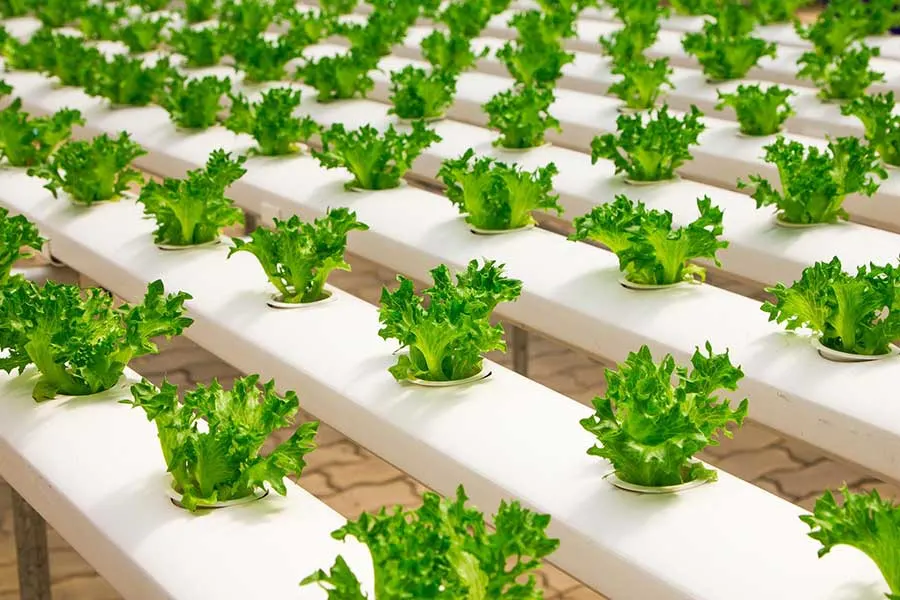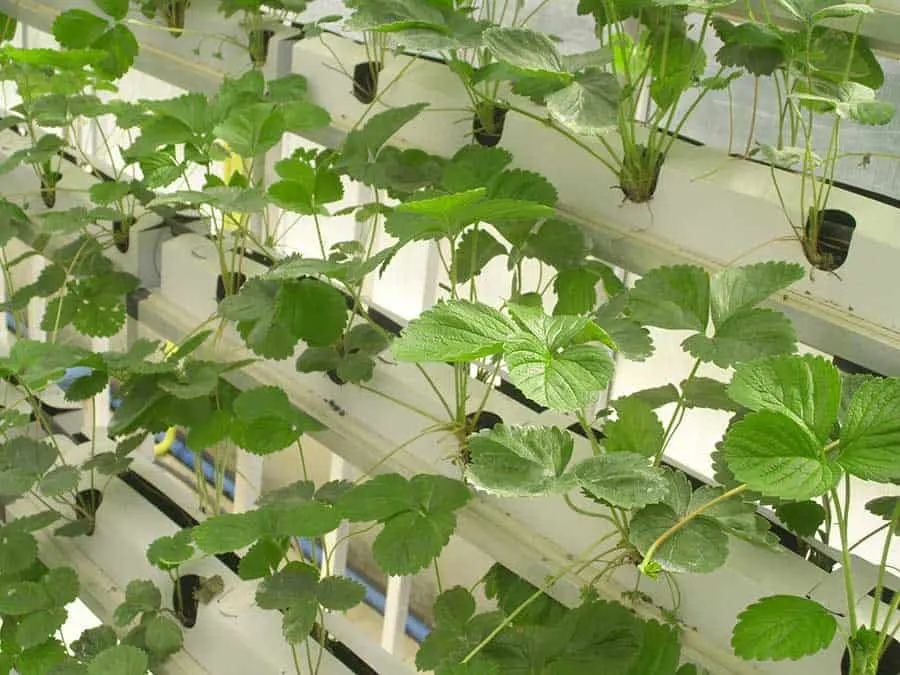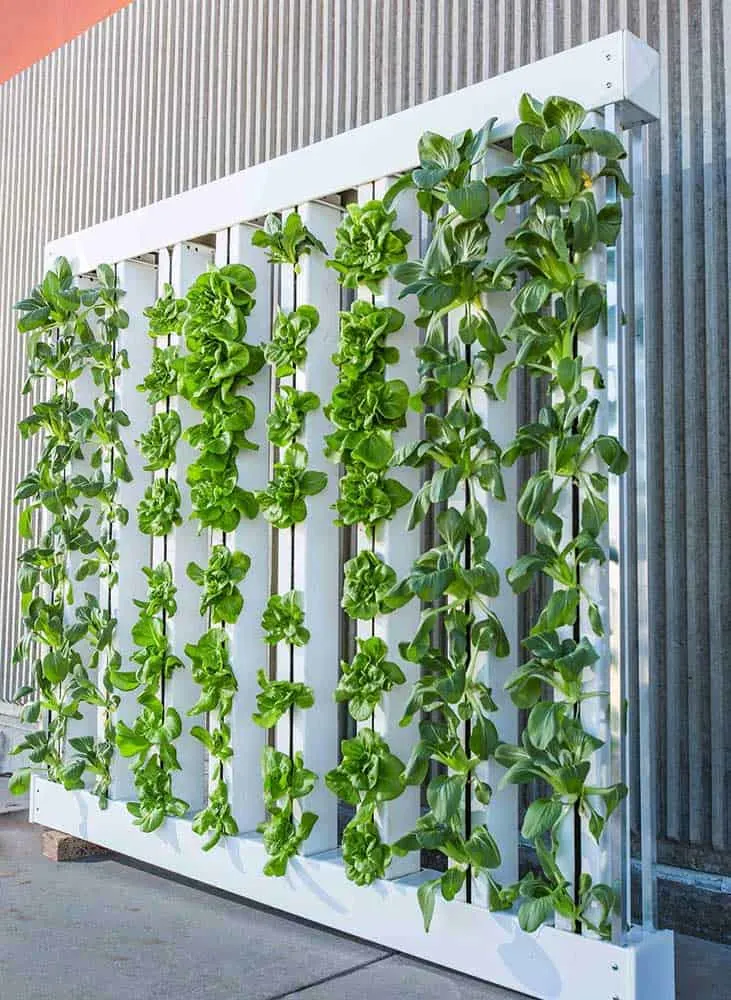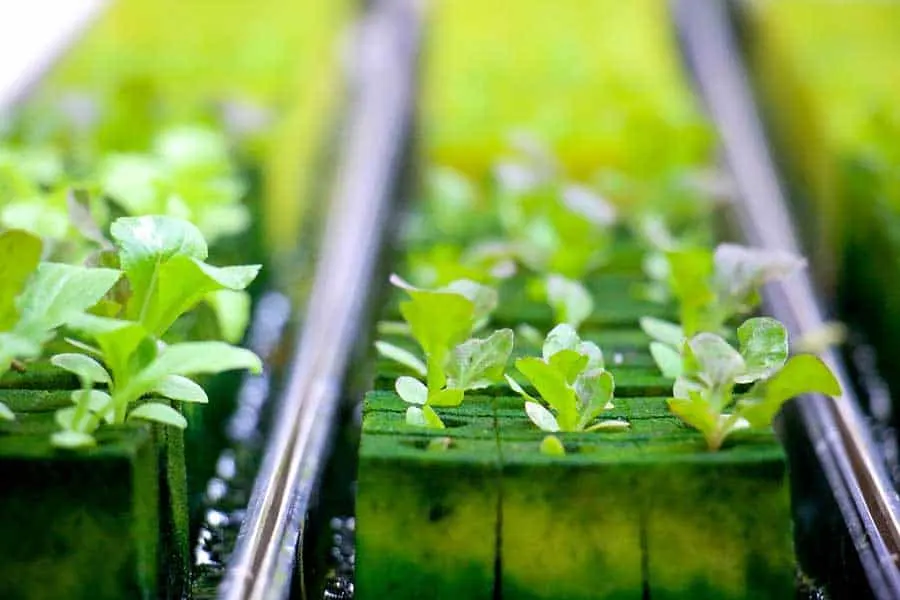Scientific and technological advancements are changing the world in ways we have never seen before. The gardening world is no exception, and hydroponics is at the forefront of this evolution. As more people discover the advantages hydroponics offers in comparison to conventional gardening, the more this innovative soilless technique gains in popularity. So in an effort to help you decide if ditching the soil makes sense for you, here is an introduction to hydroponics.

What is hydroponics?
The most simplistic definition of hydroponics is the method of growing plants in water rather than soil. The word “hydroponics” has its origins in the Ancient Greek words for “water” (hudor) and “work/labor” (ponos). Therefore, the literal definition of hydroponics is “water working.”
Even though this may seem like a new concept, hydroponics traces its origins all the way back to the Hanging Gardens of Babylon in 600 BC! But with the recent interest in sustainable living and marijuana cultivation – and recent advancements in grow light technologies – interest in hydroponics has never been so strong as it is today.
Advantages of hydroponics
Definitions aside, plants really need more than just water. As long as they receive sufficient moisture, nutrients, carbon dioxide, oxygen, and light, they will survive. Give your plants the optimal levels of each – exactly when they need it – and hydroponically-grown plants can experience faster growth, higher yields, and better quality crops in comparison to those grown in soil.

Hydroponics is all about efficiency. The roots of hydroponically-grown plants are directly exposed to a nutrient solution (water and fertilizer mix), and thus, plants get their nutrients in a much more efficient manner than what soil can provide.
And since hydroponics allows for indoor and year-round growing, harvests come quickly. You can plant several crops in the same space throughout the year, allowing you at least a few plant-to-harvest cycles per year (depending on the crop).
One of the most notable advantages of hydroponics is rapid growth. Since root systems of hydroponic plants are smaller than those of soil-grown plants, more energy gets diverted directly into foliage growth.
Smaller roots also mean space efficiency and maximizing your gardening space; crops can be planted in denser rows, both horizontally or vertically. In addition, the quality and size of hydroponically-grown plants is often superior to soil-grown crops. If you provide the proper growing conditions, hydroponic crops can reach their fullest genetic potential.
Hydroponics also allows for water and fertilizer efficiency. Most hydroponic systems are recirculating systems that recycle the water and nutrients over and over again and are changed every couple of weeks. And as far as those disease-prone pests you commonly battle outside in the garden, hydroponics nearly eliminates that issue as well.

Are there any disadvantages?
There are a few notable disadvantages to hydroponics. For one, a proper hydroponic setup requires a number of different components (more on that later). Buying these can become expensive, especially when you add high-quality, full-spectrum grow lights into the mix.
Hydroponic systems require some level of monitoring to keep nutrients, water, and pH in check. Water-based microorganisms and other water contaminants must also be kept in check to prevent disease from entering the system (soil is more forgiving in this respect).
Also, many components of a hydroponic system setup are reliant on electricity, so any power outage could wreak havoc on your plants (go solar!). Lastly, while most crops are suitable for hydroponics, there are certain crops that should be avoided (such as corn, zucchini, potatoes, summer squash, and melons).
Components for hydroponics
While hydroponics is the soil-free method of growing plants using water and nutrients, a hydroponics system is a technique employed to grow hydroponic plants. Each hydroponics system works in a slightly different manner (as you will see in the next section), but most techniques use components such as a base reservoir, grow trays, growing medium, air pumps, air stones, and timers. And of course, you will also need grow lights and a good fertilizer for hydroponics.
You have a few different options when it comes to purchasing hydroponic equipment. One option is to buy each component separately and piece it together. Another option is to purchase a kit, which is basically a bundled package of most of the items you will need to start growing right off the bat.
The least expensive option is often designing your own system with items found at a local hardware or big box store (plastic buckets, PVC pipes, etc). Many growers add additional items to create ideal indoor growing conditions (grow tents, ventilation, climate and CO2 controls, etc).

As far as grow media for hydroponics, some examples include clay pebbles, coconut fiber (coco coir), lava rocks, grow stones, perlite, vermiculite, rockwool, sand, gravel, and bark. Any grow media you choose should be inert, pH-neutral, and provide good aeration, drainage, and moisture retention. Avoid anything that will clog, compact, break down, or introduce harmful substances into the system.
Plants grown indoors require artificial lighting which closely mimics natural sunlight. They need more blue light during the vegetative phase of growth and more red light during flowering. With this in mind, full spectrum grow lights work best.
Since the light intensity of fluorescent lights isn’t really powerful enough to power a plant through every phase of growth, High-Intensity Discharge (HID) or LED grow lights are your best bet. But while HID lighting (Metal Halide (MH), High-Pressure Sodium (HPS), and Ceramic Metal Halide) has proven itself as being efficient, it also emits a lot of heat and therefore requires good ventilation.
Most quality LED grow lights, on the other hand, are easy to operate (plug-n-play), effective for every phase of growth, long-lasting, energy-efficient, and do not run hot. With that said, full-spectrum LED grow lights are probably your best option.
Types of hydroponic systems
Hydroponic systems are either active or passive and recovery or non-recovery. An active system is when the nutrient solutions moves through the system (usually with the assistance of a pump). A passive system uses a the grow media or a wick to draw the nutrient solution up to the root zone to feed plants. And a recovery system simply means that the nutrient solution is reused within the system whereas a non-recovery system discards the nutrient solution after it is used.
There are six main types of hydroponic systems: Aeroponics, Deep Water Culture (DWC), Drip, Ebb & Flow, Nutrient Film Technique (NFT), and Wicking. Each type works in a different manner, but they all deliver the necessary moisture, oxygen, and nutrients to plant’s roots. Let’s dig a little deeper into how each system works:
Aeroponics: In Aeroponics, roots are suspended in an air chamber and periodically misted with a nutrient solution. This technique uses a pump and timer but no grow media. Since the roots are totally bare, plants receive high levels of oxygen resulting in rapid growth. (not recommended for beginners)
Deep Water Culture (DWC): Deep Water Culture, also known as the “reservoir method”, submerges the plant’s roots in nutrient-rich water while air pumps/air stones provide the oxygen bubbles. Most DWC systems use a black plastic bucket as the reservoir while the plants are held in net pots (filled with grow media). DWC systems are simple and effective, and are a good option for beginners.
Drip System: The Drip System is one of the most widely used systems in hydroponics. In this system, a slow feed of nutrient solution is continually dripped onto the grow media (into the root zone) in order to supply a steady stream of nutrients and moisture to the plants. Drip systems use pumps and drip rings but no timer is necessary.
Ebb and Flow: The Ebb and Flow system (also called Flood and Drain) works by periodically flooding the nutrient solution into the growing beds at specific times. Once the nutrient solution has flooded the grow beds, it then slowly drains back into the reservoir to be used again for the next flooding. A pump and timer are necessary components of this system.
Nutrient Film Technique (NFT): In a Nutrient Film Technique (NFT) system, a thin stream of nutrient solution flows continuously through a slightly tilted gully and over the tips of a plant’s bare roots. The narrow-channel gullies have holes to suspend the plants while the tilted position allows the nutrient solution to flow back to the reservoir. A pump is required but grow media is optional.
Wick System: Since there are so few components, the Wick System is the probably the most simplistic and lowest cost hydroponic system. In fact, the Wick System doesn’t use pumps, timers, or even electricity. Most wick systems merely use a fibrous rope material to draw the nutrient solution into the grow bed (capillary action). A grow medium (like coco coir) acts to provide nutrients, aeration, moisture retention, and to support the plant.
______________________________________________________________________
There is plenty more to learn about hydroponics, but I hope this brief introduction was a helpful start. Best of luck with your garden!
***
Today’s guest post is by Hydroponics blogger Jonathan de Araujo. Read more of Jonathan’s articles at uPONICS.com.
